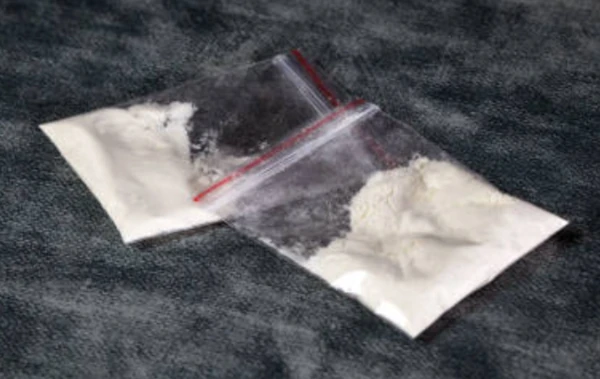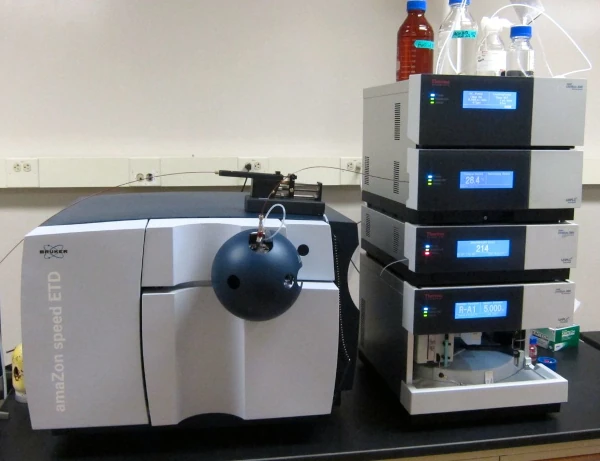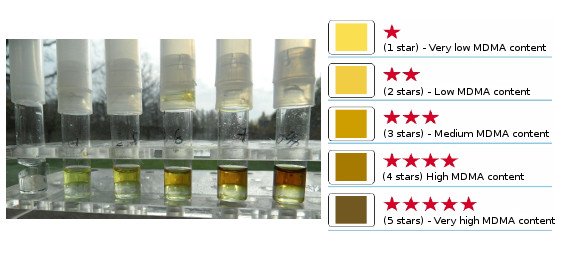MDMA, otherwise known as Molly, Ecstasy, and other street names, is a common recreational drug. It has gained popularity in various social settings, including parties, music festivals, and clubs. While steps are being taken to legalize MDMA for therapeutic use, the drug remains illegal in most jurisdictions.
To meet demand, the manufacturing of MDMA primarily takes place in clandestine laboratories, located in various regions around the world. Because of the lack of regulation and oversight, MDMA produced in clandestine labs can be contaminated with impurities or adulterated with other substances. These adulterants can be added intentionally to increase profits, or unintentionally due to improper manufacturing processes. Common adulterants include other stimulants, substances with similar effects, or even potentially dangerous compounds. Often, street drugs sold as MDMA don’t contain any MDMA at all.
Drugs Being Missold As MDMA

Some of the drugs that are frequently missold as MDMA include:
- Methylone (bk-MDMA): Methylone is a synthetic cathinone that belongs to the substituted amphetamine class of drugs. It can produce stimulant and empathogenic effects similar to MDMA. Methylone is often sold as MDMA due to its similar appearance and effects, but it is not the same substance. Current evidence suggests that methylone may carry a relatively higher risk of toxicity, is associated with a higher likelihood of causing cardiovascular effects such as increased heart rate, elevated blood pressure, and vasoconstriction.
- Mephedrone (4-MMC): Mephedrone is another synthetic cathinone that gained popularity as a “legal high” before being classified as a controlled substance in many countries. It can produce stimulant and entactogenic effects similar to MDMA and is sometimes substituted or sold as MDMA.
- Methamphetamine (Crystal Meth): Methamphetamine is a potent central nervous system stimulant that can produce euphoria, increased energy, and heightened focus. It is sometimes misrepresented as MDMA due to its stimulant effects, despite being chemically distinct. Visit our methamphetamine info page for more.
- Synthetic Cathinones (Bath Salts): Synthetic cathinones are a large family of drugs that share similarities with amphetamines. They can produce stimulant and hallucinogenic effects. Some specific cathinones, such as alpha-PVP (flakka) or alpha-PHP, have been reported to be sold as MDMA.
- Other Substances: In addition to the substances mentioned above, other drugs such as amphetamines, caffeine, synthetic cannabinoids, or even relatively harmless substances like baking soda or sugar have been found to be misrepresented as MDMA. These substances may be added to mimic the appearance or weight of MDMA tablets or capsules.
It’s important to note that the misrepresentation of drugs poses significant risks to users, as the actual composition and effects of the substance may differ from what is expected. Utilizing drug-checking services or test kits can help you verify the contents of a substance and make more informed decisions about its use. This guide is is oriented to drug testing for harm reduction purposes, but it’s also valid for academic, law enforcement, and other purposes.
Using Spectrometers To Test For MDMA

High-performance liquid chromatography (HPLC) coupled with a mass spectrometer (MS) (often referred to as HPLC-MS or LC-MS/MS), are considered the gold standard for testing drug samples.
HPLC is a technique used to separate and identify different components in a mixture based on their chemical properties and interaction with a stationary phase and a mobile phase. It is commonly used to separate drug compounds in complex mixtures.
Mass spectrometry (MS) is a powerful analytical technique that ionizes molecules and measures their mass-to-charge ratios. It can provide highly accurate identification and quantification of substances based on their unique mass spectra.
When HPLC and MS are combined, they offer a comprehensive and reliable method for drug analysis.
While extremely effective, these spectrometers can range from thousands to hundreds of thousands of dollars. Individuals using spectrometers require a significant amount of training before testing can be done effectively.
Drug checking services that use spectrometers make comprehensive testing more accessible. Organizations that provide these services include Energy control in Spain. The price ranges from €60 -120€ ($66 – 130$ USD) per sample tested.
The legality of sending scheduled drug samples in the mail to drug checking services can vary depending on the country and jurisdiction. In some places, there may be legal frameworks or exceptions that allow for the mailing of controlled substances for purposes such as harm reduction, public health initiatives, or research. If you are considering sending a drug sample for testing, it is advisable to contact the drug checking service directly and inquire about their policies, procedures, and any legal considerations.
Using Testing Kits to Test MDMA

Drugs can be presumptively identified using what are called reagent test kits. Basically, reagents are liquids that change color when they come in contact with certain compounds. Different reagents can produce different color changes with the any given compound. The idea is that by looking at color changes, you can compare them to expected color changes for the drug you’re suspect is present in the sample. A limitation of reagent testing is that even if the color reactions are consistent with a certain drug, there’s no guarantee your sample is that drug. You can however, rule out substances. A reagent is typically named after the person who first developed it (Marquis, Morris, Ehrlich etc.).
Advantages of using reagent test kits over a spectrometer include:
- Lower cost: Costs run from around $0.10 to $2 per test.
- Quick results: You don’t need to wait for lab results.
- Accessibility: Reagent tests are readily available, and you don’t have to send drugs in the mail which is illegal in some jurisdictions.
- Test anywhere: You can test at home or on the go.
Identifying MDMA in Drug Samples
When testing for MDMA, it’s highly recommended to use more than one reagent test. Using multiple tests serves as a double check, and helps rule out false positives. For MDMA reagent testing, we recommend using the following three tests at least:
- Marquis test: Marquis is a tried and true test for MDMA. Expect a black color with Marquis and MDMA. If you can only afford one test kit, this is the one to get.
- Froehde test: Also goes to black with MDMA. Froehde is a good double check for MDMA, and helps rule out 5-APB/6-PB, which is difficult to detect with other tests.
- Simon’s test: Is useful to differentiate between MDMA, and MDA (a closely related substance). Simon’s is a secondary test, and shouldn’t be used on it’s own.
Shameless plug: You can get the 3 tests listed above in a convenient package, at a discount.
MDMA (Molly/Ecstasy) Test Kit »
Other tests that can be used to detect MDMA include the Mecke reagent, Liebermann reagent, and Mandelin reagent.
MDMA Testing Video Demo
The above video shows a test to identify MDMA with 3 different reagents, and the results you can expect.
MDMA Color Reactions with all Available Reagents:
Testing MDMA Purity
While the reagents discussed above can indicate the presence of MDMA, they don’t indicate the proportion of MDMA in a sample. You may use an MDMA purity test to get an idea of how pure your sample is. It works by producing a darker color, the higher the purity of your sample.

Having and idea of the purity of your sample is useful because the higher the purity, the lower the proportion of your sample is other substances. Conversely, the lower the purity, the higher the quantity of cutting agents your sample likely has.
Testing MDMA for Fentanyl and Fentanyl Analogs
Fentanyl is a highly potent synthetic opioid with a much higher potency than MDMA. Its presence in MDMA can lead to severe health risks, including overdose and respiratory depression, even at low doses. Even though black market vendors generally don’t intend to sell MDMA adulterated with fentanyl, the clandestine nature of illicit drug labs and lack of manufacturing and quality controls means that fentanyl contamination is a real risk.
Because of this danger, it’s highly recommended to test MDMA samples intended for consumption for the presence of fentanyl. This can be done with a fentanyl test kit, which include test strips. It works by diluting MDMA with a measured quantity of water, and then immersing a fentanyl test strip into the mixture. Dilution with water is required to avoid false positives.
Beware, not all fentanyl strips are the same. Some fentanyl strips are advertised as not requiring dilution with a specific amount of water. These strips don’t test for a dangerous and common fentanyl analog called carfentanil. Carfentanil is 100 times more potent than fentanyl. No fentanyl strip can test for all analogs, but carfentanil is an important one to check for because it is relatively common. Other fentanyl strips have not been laboratory assessed to confirm that they work for drug checking. We believe the test strips we carry are the best on the market, and they look like this:
Look for blue fentanyl strips as shown above. They come in plain white packaging or in green packaging labelled “Rapid Response”. They are lab tested and confirmed to detect fentanyl, carfentanil, and other analogs.
You can expect the following results when testing for fentanyl with our test strips:

Test kits to test for fentanyl and fentanyl analogs can be found here:
MDMA Testing For Harm Reduction – Conclusion
To prioritize safety, it is advisable to make informed decisions, practice harm reduction strategies, seek accurate information from reputable sources, and consult healthcare professionals or drug experts who can provide personalized guidance and support.



